The piano, an instrument of rich sound and complex mechanics, enjoys a storied history and is undoubtedly a masterpiece of musical craftsmanship. A key component contributing to its distinctive tonal qualities is its strings. But what exactly are these strings made of? To appreciate the essence of the piano’s melody, it’s crucial to delve into the construction and composition of its strings, uncovering the fascinating blend of science and art that gives rise to the instrument’s characteristic sound.
What Are Piano Strings For?
Piano strings are the heart of the instrument, responsible for producing its myriad of sounds. When a key is pressed on the piano, it activates a hammer that strikes a particular string or set of strings, resulting in their vibration. This vibration resonates through the soundboard of the piano, amplifying the sound and creating the tone that we hear. Every string of the piano is precisely tuned to produce a distinct pitch, enabling the instrument to encompass a vast spectrum of musical notes. The combined effect of all these strings gives the piano its richness and depth of sound, making it an incredibly versatile instrument for creating music.
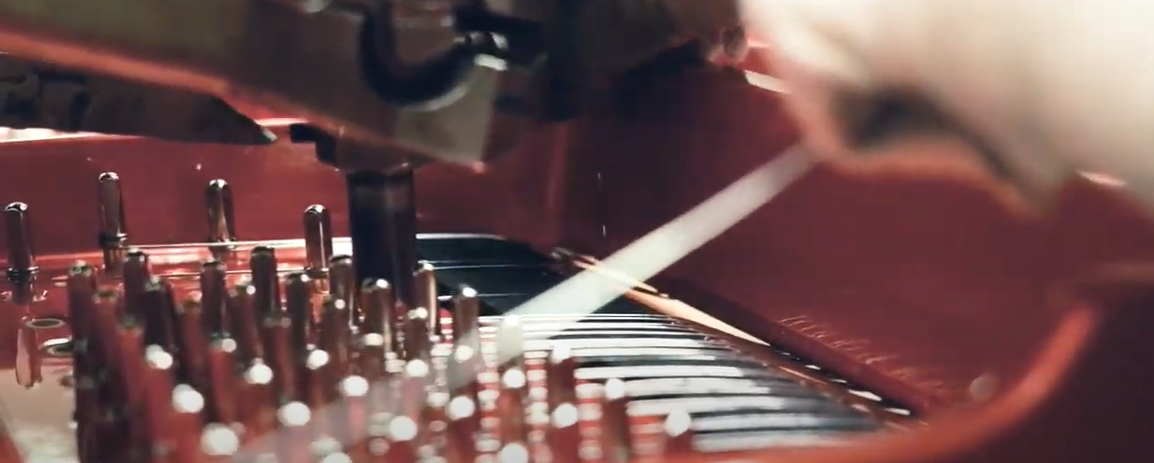
History Of Piano Strings
The story of piano strings is as fascinating and diverse as the instrument itself, tracing its origins back to the early 18th century. Originally, strings were made from sheep gut, a common material used in the making of strings for various musical instruments during that period. However, gut strings were not durable, and their pitch was highly sensitive to changes in humidity and temperature. By the late 18th century, piano builders began to experiment with metal strings, initially using iron. These strings proved to be more durable and offered a wider range of tonal qualities. Over time, piano string technology evolved, and by the 19th century, high-quality steel and copper-wound strings became the norm. These materials offer the durability and uniformity required for the piano to create its expansive repertoire of musical notes. In modern times, piano strings are predominantly crafted from high-carbon steel, offering a harmonious blend of strength, flexibility, and tonal excellence. This meticulous combination plays a pivotal role in producing the piano’s exquisite and resounding sound. [1]
How Many Strings Does A Piano Have?
A typical grand piano boasts a remarkable array of strings, typically ranging from 230 to 240 in number. This large number is necessary to cover the broad range of notes that a piano can produce – typically over seven octaves. Each note on a piano can be represented by one, two, or even three strings, creating a harmonious blend of sounds. Typically, the bass notes in an instrument are produced using one or two thicker strings, while the treble notes are created with three thinner strings. The multiple strings for a single note are struck simultaneously to create a louder, richer sound. The exact number of strings can vary depending on the specific model and design of the piano, but the overall purpose remains the same: to provide the wide range and depth of tone that makes the piano such a versatile and cherished instrument.
What Are Piano Strings Made From?
Piano strings are predominantly crafted from high-carbon steel, meticulously selected for its remarkable combination of strength, durability, and flexibility. This material allows the strings to withstand the high tension necessary for a piano to produce its wide range of pitches. The lower-pitched strings, known as bass strings, are often wrapped with a layer of copper wire. This wrapping increases the mass of the string without significantly increasing its thickness, allowing it to vibrate at lower frequencies and produce a richer, fuller sound. [2]
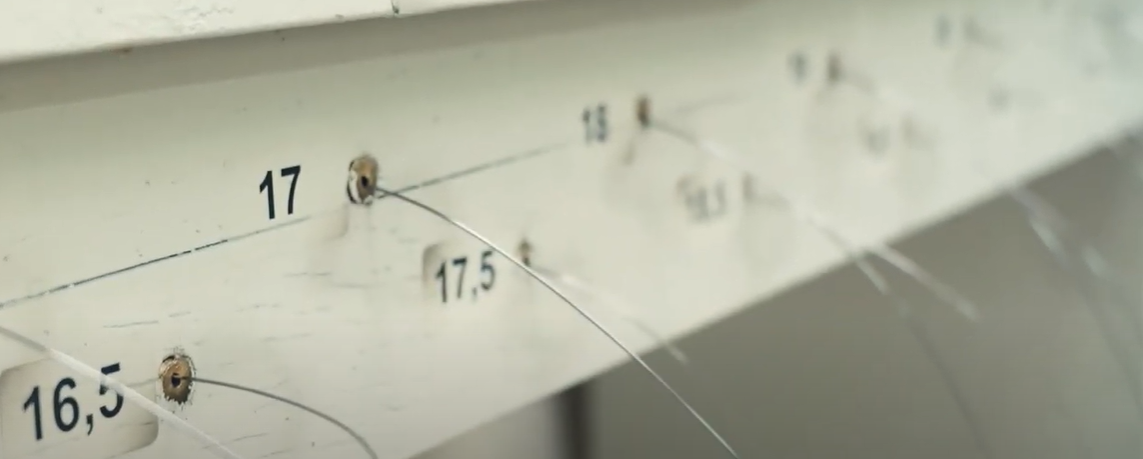
Standing Waves
Before we explore the materials utilized in piano strings, it is crucial to grasp the fundamental physics behind the vibration of a piano string, which produces the enchanting sound we hear. This involves the concept of standing waves. When a piano key is struck, the corresponding hammer hits the string and creates a disturbance, setting the string into a state of vibration. Fundamentally, the vibration is a wave that propagates along the string’s length. However, since the string is fixed at both ends, the wave gets reflected when it reaches the ends. The incident wave and the reflected wave come together, resulting in the creation of what is known as a “standing wave”. In a standing wave, certain points known as nodes appear to stand still while other points, known as antinodes, oscillate with maximum amplitude. The frequency of the standing waves, which correlates to the sound we perceive, is dictated by various factors such as the length, tension, and mass per unit length (essentially, the thickness) of the string. Consequently, the tonal qualities of a piano can be finely adjusted by modifying the properties of its strings.
Strings & Notes
Each piano string is meticulously designed and calibrated to produce a specific musical note. The perceived pitch of a piano string, which determines whether a note sounds high or low, is primarily influenced by three factors: the length of the string, the tension it is under, and its mass per unit length. Shorter strings vibrate more quickly and thus produce higher pitches, while longer strings vibrate slower and generate lower pitches. Similarly, a tighter string will vibrate faster, leading to a higher pitch, while a looser string will vibrate slower, resulting in a lower pitch. Finally, strings with greater mass per unit length vibrate at a slower rate, resulting in a lower pitch. Conversely, lighter strings vibrate more quickly, resulting in a higher pitch. By carefully adjusting these three factors, piano manufacturers can ensure that each string produces the correct note. Furthermore, for many notes on the piano, multiple strings are struck simultaneously to produce a richer, louder sound. These strings are accurately tuned to vibrate at the same frequency, ensuring that they produce the same pitch. [3]
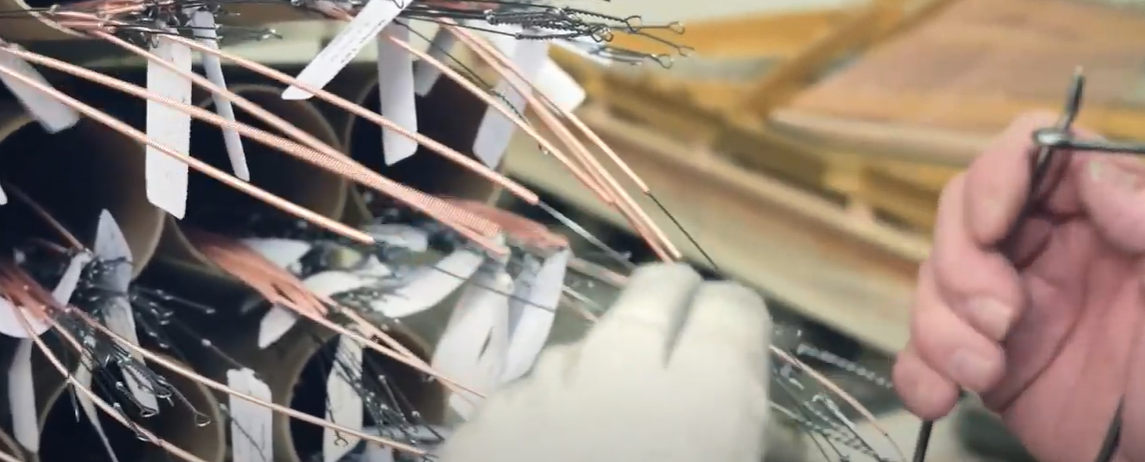
How Piano Strings Are Made
Creating piano strings is a meticulous process that requires precision and expertise. The initial stage entails selecting the suitable variant of high-carbon steel, ensuring its compatibility with the intended application. The steel is subsequently shaped into lengthy and slender wires through a process called drawing. This technique involves pulling the material through a die, resulting in a reduction in its diameter. After this, the wires are heat-treated to enhance their durability and flexibility. For the lower-pitched bass strings, an additional layer of copper wire is wound around the steel core. This increases the mass of the string, allowing it to vibrate at lower frequencies to produce deeper tones. The wires are then cut to the necessary length to match the specific note they are intended to produce. Finally, the strings are installed onto the piano with precise tension to ensure they produce the correct pitch. This tension is adjusted during the tuning process to fine-tune the pitch of each note. The result is a set of high-quality piano strings that can withstand the high tension necessary for a piano to produce its wide range of pitches, and contribute to the rich, resonant sound of the instrument.
How Strong Is Piano Wire?
Piano wire, or commonly known as music wire, possesses remarkable strength. It is crafted from high-carbon steel, a material renowned for its exceptional durability and resilience. The wire has to be robust enough to withstand the high tension it is placed under when it’s struck by the piano’s hammers to create sound – often up to 200 pounds of pressure per string. It also needs to be resilient enough to maintain its tension and tuning over time, even with regular playing. This strength doesn’t mean it’s invincible, however. Excessive force, or wear and tear over a long period, can cause a piano wire to break. However, such instances are relatively rare thanks to the high quality of the materials used and the expert craftsmanship involved in stringing a piano. [4]

What To Do If A String On Your Piano Breaks?
If a string on your piano happens to break, it is crucial to remain calm and composed. Broken piano strings are repairable, and the process is relatively straightforward. Firstly, avoid removing the broken string yourself as incorrect removal can potentially damage the piano. Instead, call a professional piano technician who is equipped with the necessary tools and knowledge. They will remove the old string and replace it with a new one that matches the specifications of your piano. Keep in mind that the new string will need to be returned several times before it maintains a stable pitch due to the natural stretching that occurs. Regular tuning will ensure the string aligns with the rest of the piano. With these steps, your piano should be back to normal, ready to produce its beautiful melodies once again.
How To Replace Your Piano Strings
Replacing piano strings is a meticulous endeavor that demands utmost precision and meticulousness. Here’s a guide on how to do it step by step:
- Identify the Broken String: The first step involves identifying which string is broken. Each string on a piano corresponds to a particular note, so it’s crucial to know which string needs replacing. Keep a record of the note that the string played for reference during the replacement process.
- Remove the Broken String: Using the correct tuning key, loosen the pin associated with the broken string. Unwind the string, then carefully remove it from the hitch pin at the opposite end of the piano. Be cautious during this process as the high tension in the strings can make them prone to snapping, which can be dangerous.
- Measure and Cut the New String: Measure the length of the old string and cut a length of new wire that matches. Make sure that the new string is the appropriate gauge for the note it is intended to replace.
- Install the New String: Pass the new string through the hole in the tuning pin, allowing a slight amount of slack for wrapping the string around the pin. As you wind the string, make sure it coils neatly down the pin. The other end of the string should be secured to the hitch pin.
- Tune the New String: After installing the new string, gently bring it up to pitch using a piano tuner. Remember, new strings will stretch, so you will need to retune several times before the string retains a stable pitch. [5]
Although these steps can guide on replacing a piano string, it is essential to recognize that this task is specialized and is often better suited for professionals. If you’re unsure, always consider calling a piano technician to ensure the job is done correctly and to avoid potential damage to your piano.
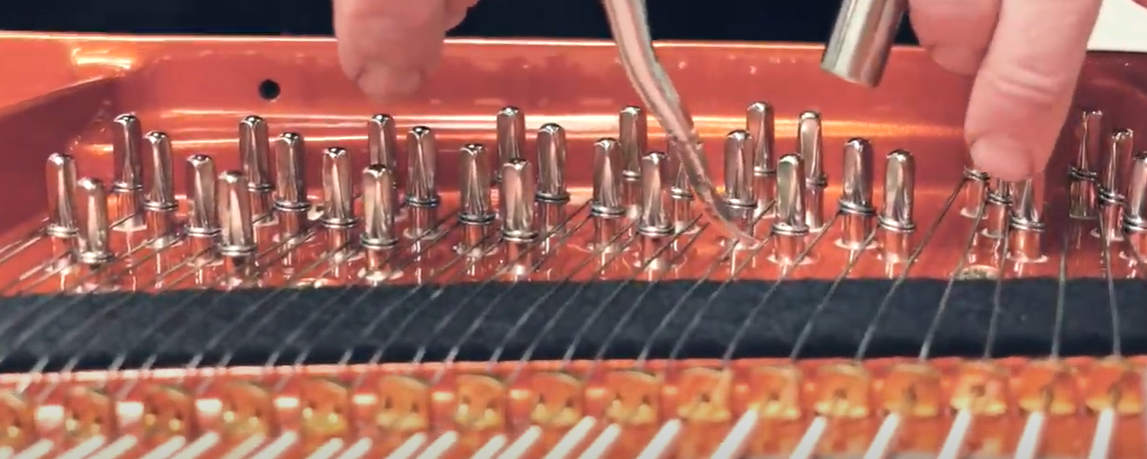
How Much Does It Cost To Replace A Piano String?
The price of replacing a piano string may fluctuate depending on several factors. The string type, the complexity of the replacement, and the rates of the professional doing the work all contribute to the overall cost. Typically, the cost of the string itself ranges from $10 to $50 per string. The labor cost, including the technician’s service charge, can range from $100 to $200, depending on your location and the complexity of the job. It’s also worth noting that new strings will require tuning more frequently initially, which may incur additional costs. It is important to bear in mind that although attempting to replace a piano string on your own may appear to be a cost-saving option, improper replacement can result in more significant and costly damage. It’s generally best to consider hiring a professional to ensure a proper job.
FAQ
What were old piano strings made of?
Old piano strings were typically made of sheep gut, also known as catgut, despite the misleading name. This material was widely used in stringed musical instruments, including pianos, until the 19th century. The gut strings produced a warm and rich sound but lacked the volume and durability provided by modern metal strings. With the advent of industrial manufacturing processes, piano makers began to use strings made of high-carbon steel, also known as piano wire. The steel strings brought greater volume, longer lifespan, and improved tuning stability, which significantly enhanced the capabilities of the piano and contributed to its evolution into the instrument we know today.
What are Steinway piano strings made of?
Steinway & Sons, renowned for their superior quality pianos, use piano strings made from high-tensile steel, also known as piano wire. This is the same material used in most modern pianos for its exceptional durability and resilience under high tension. Steinway goes a step further by using custom-made strings, produced to meet their precise specifications. Depending on the model and the specific note, Steinway pianos may also employ strings wrapped with copper wire to enrich the lower tones. This careful selection and crafting of materials helps Steinway pianos deliver their distinctive rich, resonant sound.
What are piano strings wrapped with?
The majority of piano strings are not wrapped, but the bass strings are an exception. These strings are often composed of a steel core wrapped with copper wire. The purpose of wrapping the bass strings is to increase their mass without significantly increasing their stiffness. This allows the string to vibrate more slowly, producing the deeper notes located on the left side of the piano. The copper wire wrapping enhances the richness and depth of these lower tones, allowing for a balanced and harmonious sound across the entire instrument.
Why are piano strings so strong?
Piano strings need to be incredibly strong due to the high tension they are under. This tension is what allows the strings to vibrate and produce sound when struck by the hammers inside the piano. A typical piano string can be under up to 200 pounds of tension, with the combined tension in a piano amounting to 20 tons or more. Consequently, they are made from high-carbon steel, also known as piano wire, which has the necessary strength and durability. This ensures the strings can withstand the pressures they face during play and over time, thereby maintaining the pitch and volume of the sound, as well as preventing breakage. This strength, coupled with precise manufacturing and installation processes, contributes to the longevity and sound quality of the piano.
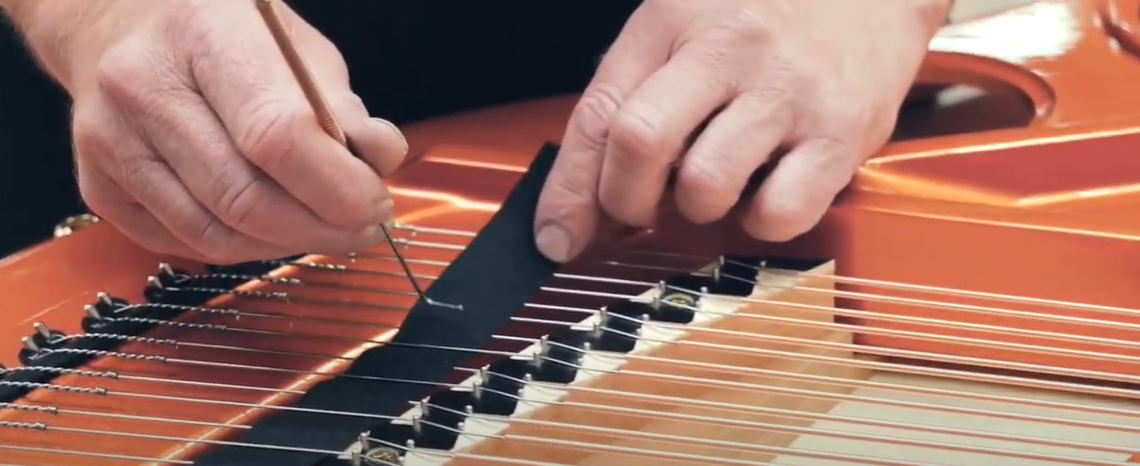
Can piano strings rust?
Yes, piano strings can rust over time, particularly if they are exposed to humid conditions or not properly maintained. The high-carbon steel used in piano strings is susceptible to oxidation, which can lead to rust. Rust on piano strings can negatively affect their sound quality and overall durability. It can make the strings brittle and prone to breaking while also dulling the instrument’s sound. Therefore, it’s essential to ensure a suitable environment, with controlled humidity, for the piano and to clean the strings regularly with a dry cloth to prevent dust accumulation and potential rusting.
Can piano strings break?
Yes, piano strings can break, although it’s not a common occurrence under normal circumstances. The high tension a string is under — as well as factors such as age, use, quality, and maintenance — can contribute to a string breaking. Similarly, exposure to drastic or frequent changes in temperature and humidity can weaken the strings and make them more susceptible to breakage. Therefore, it’s important to maintain a stable environment for the piano and to adhere to a regular maintenance schedule. If a string does break, it should be replaced as soon as possible to prevent damage to the piano and to remain in tune. Always consult a professional piano technician to replace a broken string, as they have the necessary knowledge and experience to do so without causing further damage.
How many years do piano strings last?
The lifespan of piano strings can vary greatly depending on several factors such as the quality of the strings, usage, environmental conditions, and maintenance. Under ideal conditions, high-quality piano strings can last anywhere from 10 to 50 years. Regular use of the piano can accelerate the wear and tear on the strings, resulting in a need for replacement sooner. Conversely, light use and proper maintenance can prolong the life of the strings. Environmental factors such as humidity and temperature can also affect the longevity of piano strings, as they can cause rusting and other structural damage. Therefore, while it is difficult to provide a definitive lifespan for piano strings, proper care and use can substantially increase their longevity. As a rule of thumb, it is recommended to have your piano inspected by a professional technician every 5-10 years to assess the condition of the strings.
Does music wire rust?
Yes, similar to piano strings, music wire, which is usually made of high-carbon steel, can also rust over time. This susceptibility primarily depends on environmental conditions, particularly humidity, and the care given to the instrument. Prolonged exposure to moisture can cause oxidation in the steel, leading to rust. Rusty music wire can compromise the sound quality and reduce the overall lifespan of the instrument. Therefore, it’s essential to keep your instrument in a controlled environment and clean the wire regularly to prevent rusting. If you notice any signs of rust, it’s best to consult a professional for advice on maintenance or possible replacement.
Useful Video: How a Schimmel Piano is made – Piano Strings
Conclusion
In conclusion, the making and maintenance of piano strings involve a great deal of precision and care, from the selection of high-carbon steel or music wire that can withstand immense tension, to the meticulous wrapping of bass strings for rich, full-bodied sound. While longevity varies based on factors such as usage, environmental conditions, and maintenance, high-quality piano strings in ideal settings can last anywhere between 10 to 50 years. However, they are susceptible to effects of rusting if exposed to moisture and humidity, and hence, require regular cleaning and maintenance. Instances of string breakage are relatively rare but possible, necessitating professional assistance for replacement. Understanding these aspects can prove invaluable for piano owners seeking to preserve the integrity of their instruments and enjoy the beautiful music they produce for years to come.
References:
- https://millersmusic.co.uk/blogs/blog/piano-strings#:~:text=Piano%20strings%20are%20almost%20always,fantastic%20ringing%20frequency%20when%20struck.
- https://pianopricepoint.com/mapes-piano-string-company-how-piano-strings-are-made/
- https://soundsfunny.org/what-are-piano-strings-made-of/
- https://www.nbcnews.com/id/wbna43111562
- https://www.hellosimply.com/blog/pianos/piano-strings/




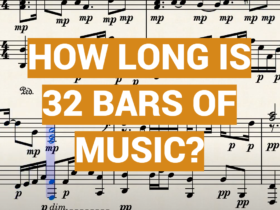





Leave a Reply